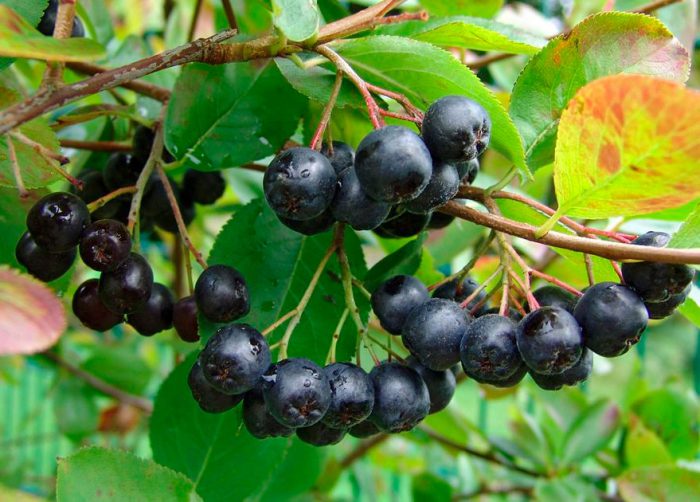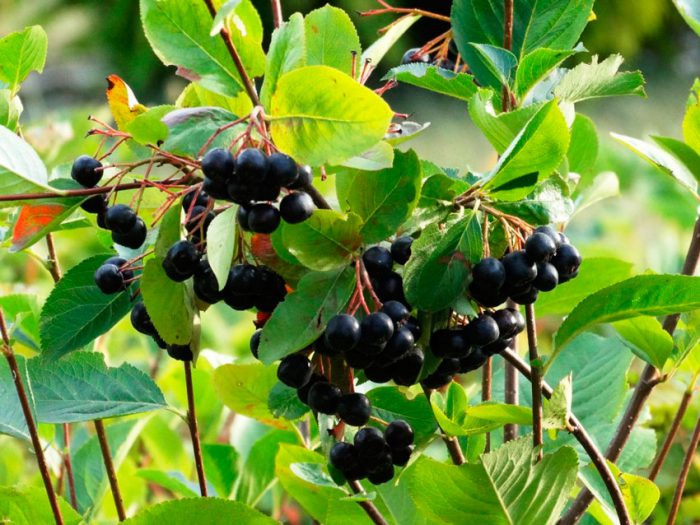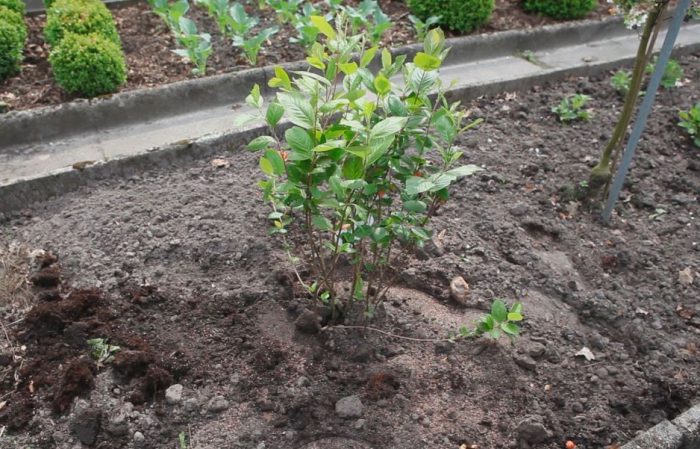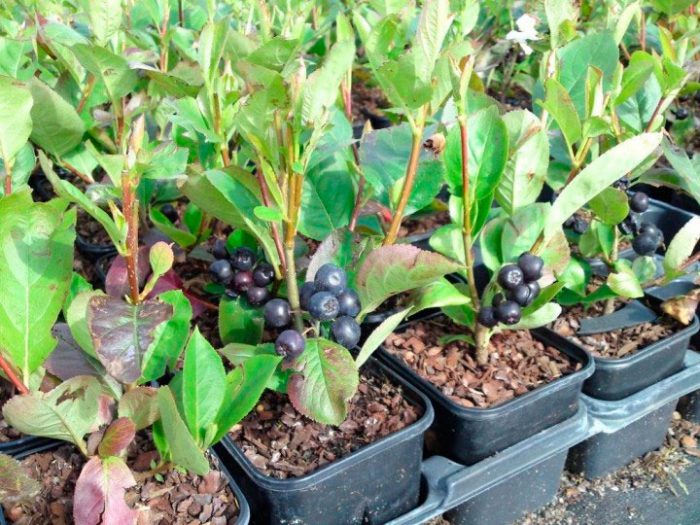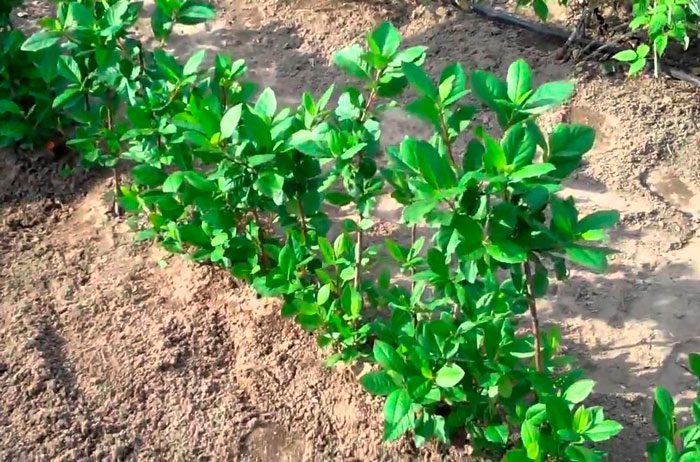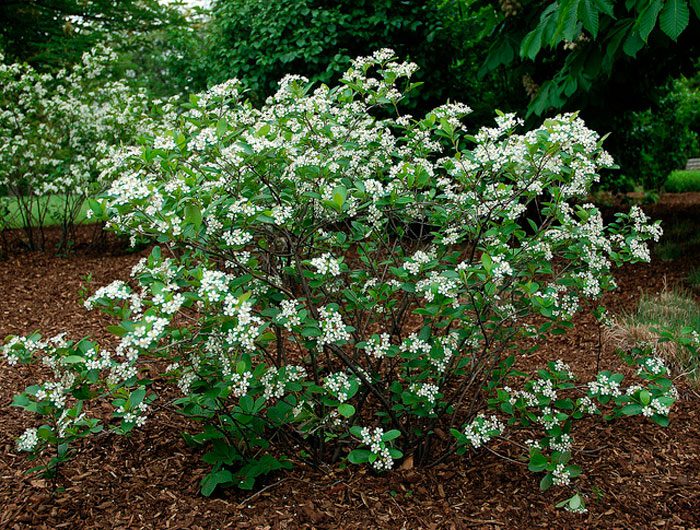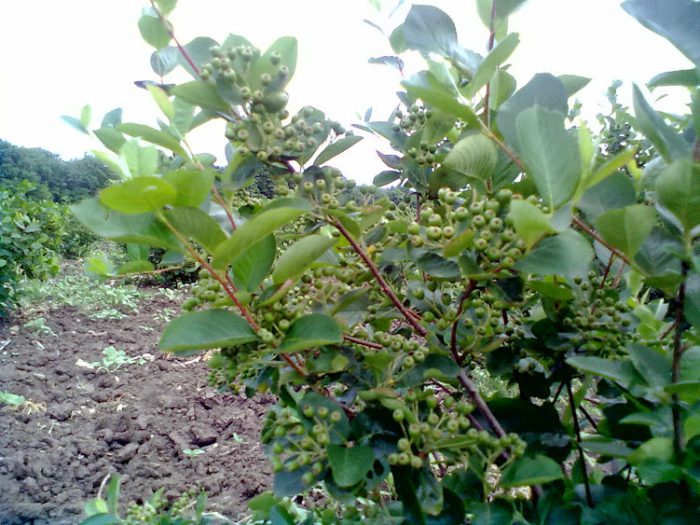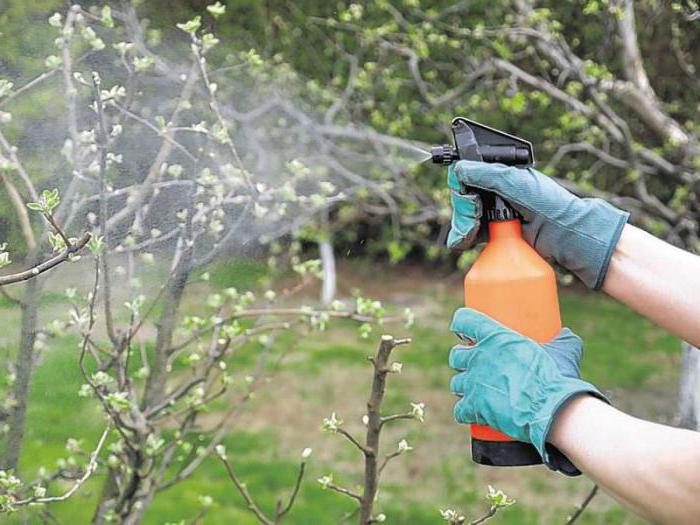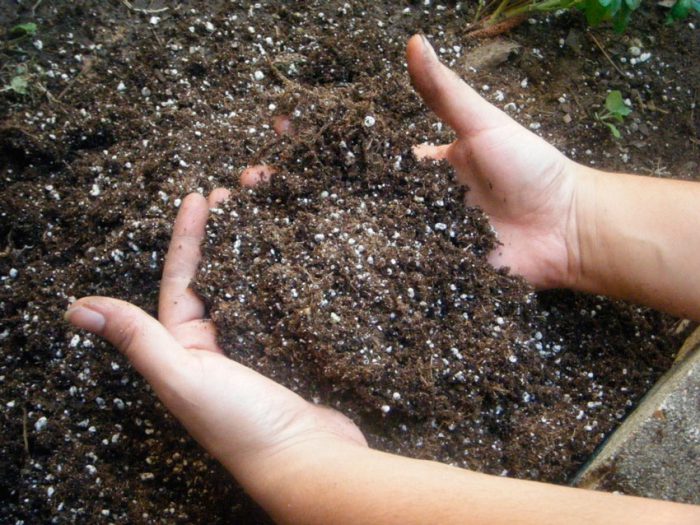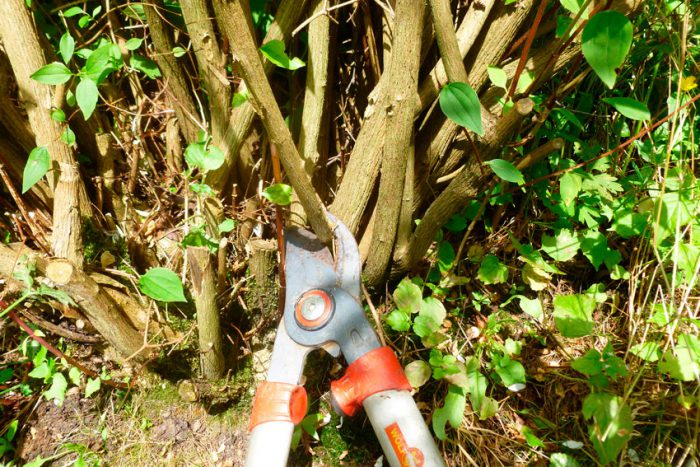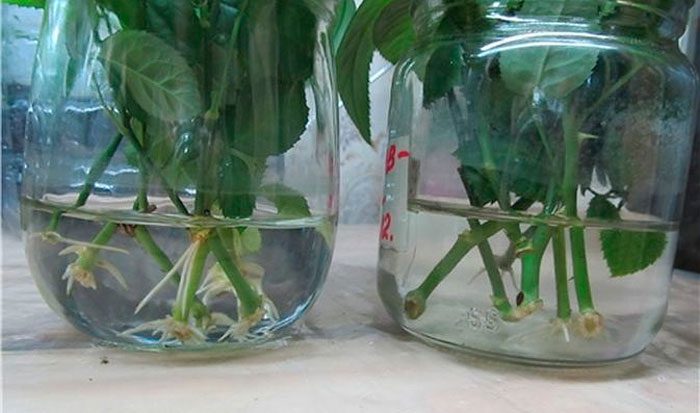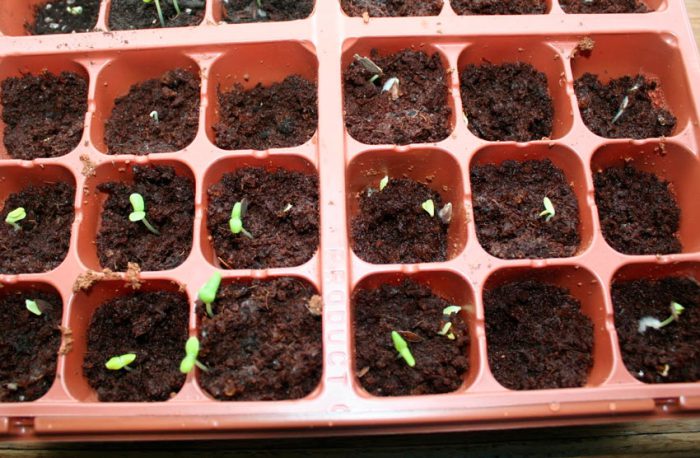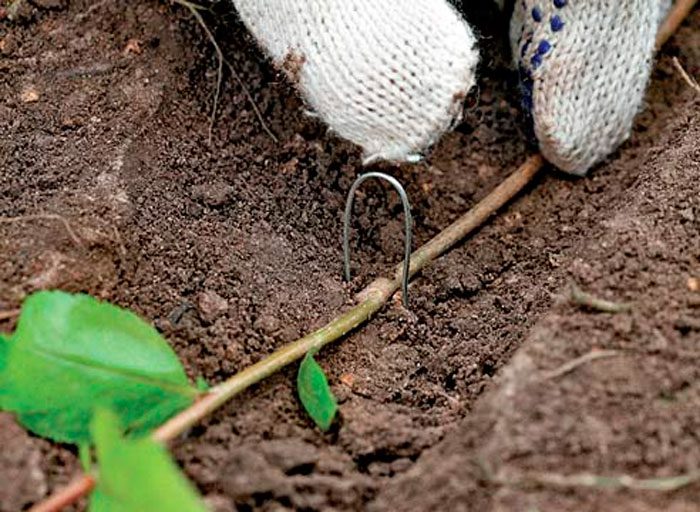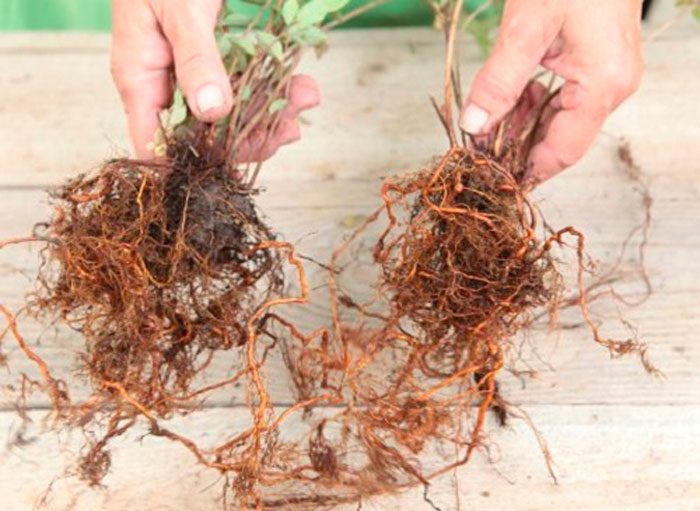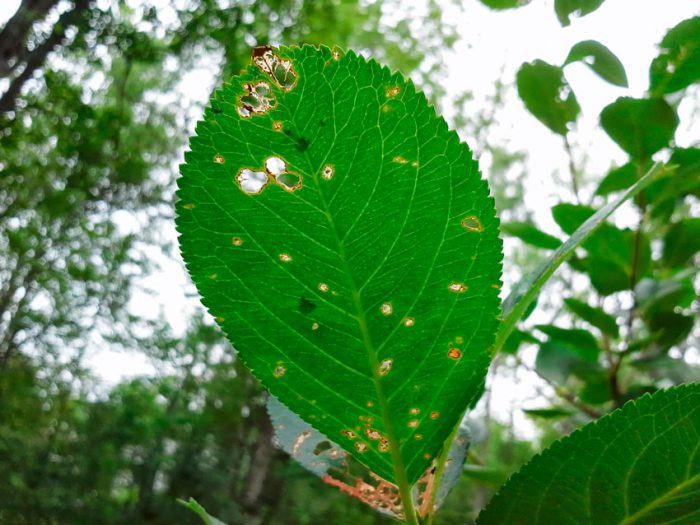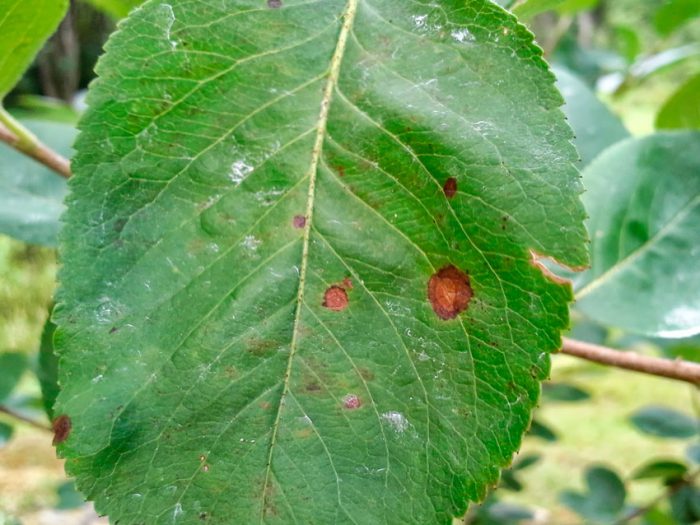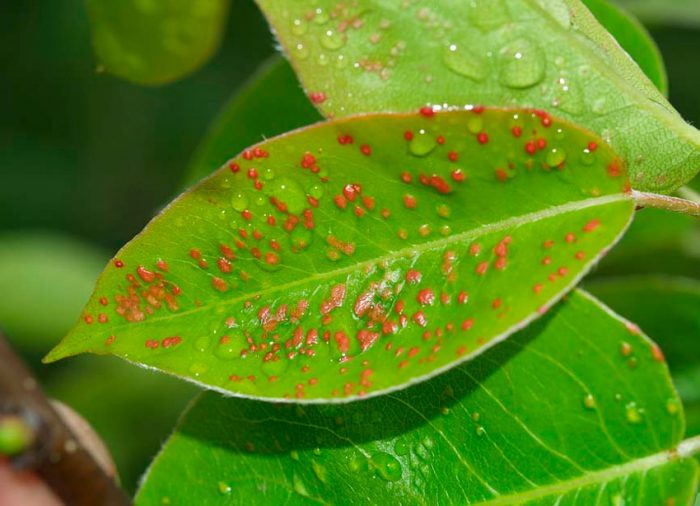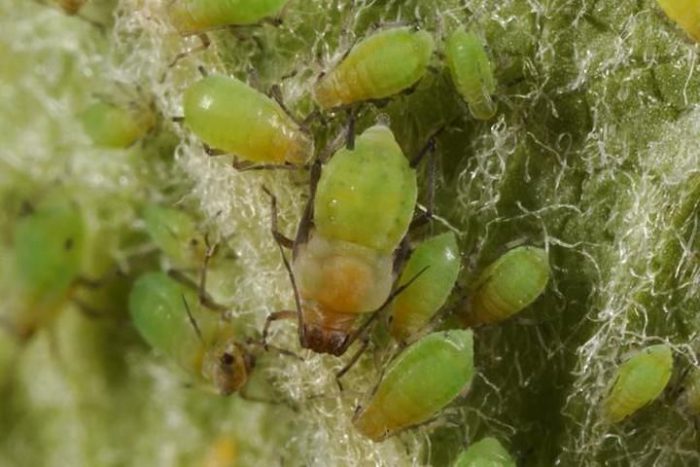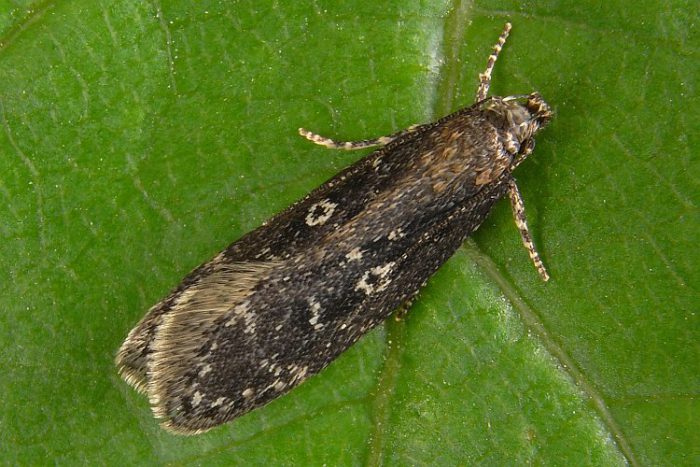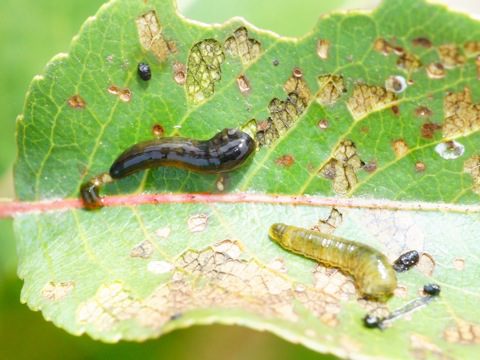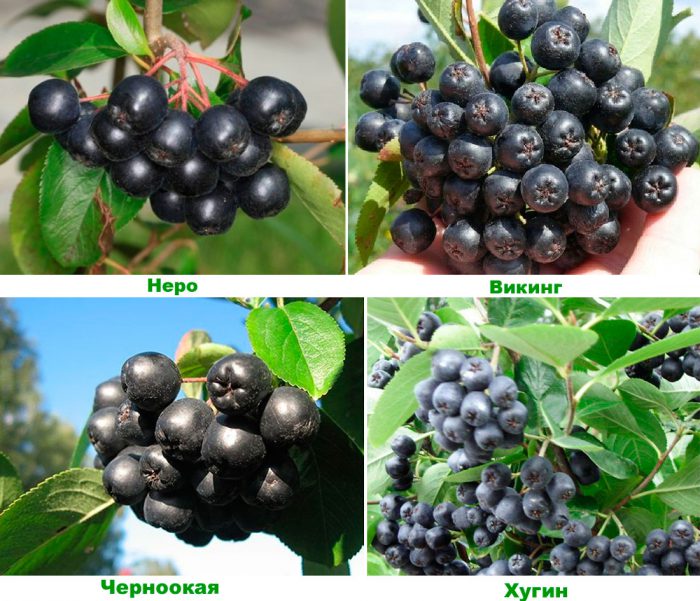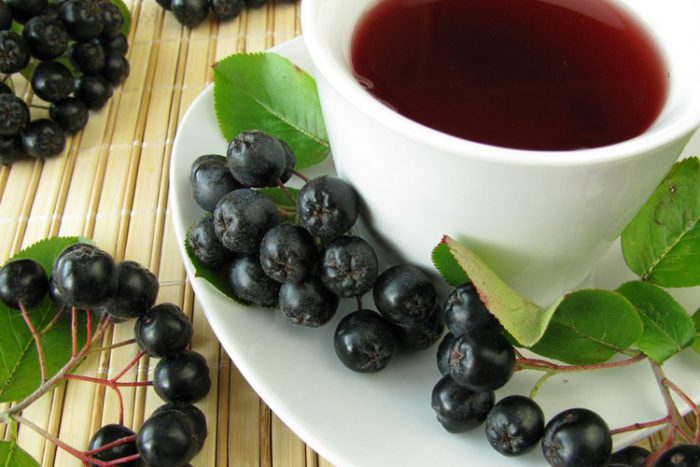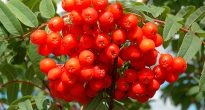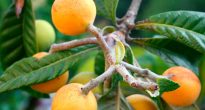Chokeberry (Aronia melanocarpa) is also called chokeberry. This fruit tree or shrub is a representative of the aronia species of the pink family. Its name comes from the Greek word that translates as "benefit, help." The homeland of this plant is the eastern region of North America, it prefers to grow on lake and river banks. In North America, about 20 species of chokeberry are found in nature. Earlier in Europe, such a plant was cultivated exclusively as an ornamental plant. However, in the 19th century Michurin noticed the unpretentiousness of the chokeberry and its suitability for selection. As a result, today it is grown in almost all countries. The second name of such a plant is chokeberry, however, they are almost nothing like ordinary mountain ash. The only similarity between these plants is that they are members of the same family - pink.
Content
Features of chokeberry (mountain ash)
Chokeberry is a frost-resistant deciduous shrub with strong branching, reaching a height of up to 300 centimeters. Its root system is located very close to the soil surface. The crown of young specimens is very compact, but in an adult shrub it can reach about 200 centimeters in diameter. Young stems are colored brown-red, which eventually changes to dark gray. One-piece simple elliptical leaf plates are alternately located and have a crenellated-toothed edge.In length, they reach 4-8 centimeters, and in width - 3-5 centimeters. The front surface of the leaves is glossy, dark green leathery, and the back has a whitish color, which is associated with the presence of pubescence. From mid-September, the color of the foliage changes to red-purple. The scutellous dense inflorescences consist of fragrant flowers of pale pink or white color, which have purple anthers. Flowering begins from mid-May to early June. Glossy fruits of a spherical shape can be painted in black-purple or purple, and there is a bluish bloom on their surface. They ripen in August or September. In a wild plant, the mass of fruits, as a rule, is not more than 1.5 g, while in cultivated varieties they are not so small.
Such a plant is cultivated as a medicinal, fruit and ornamental plant. Aronia is considered a relative of pear, bird cherry, quince, peach, almond, hawthorn, sweet cherry, apple, plum, cherry plum, apricot, nectarine, rosehip and cherry. All of these horticultural crops belong to the same family.
Planting chokeberry
What time to plant
Aronia aronia is advised by experts to plant in open soil in autumn, namely, in the last days of September or the first in October. However, it can also be planted in the spring, and you need to catch it before the last days of April. This plant is distinguished by its undemanding soil, so it can be successfully grown on acidic or dry sandy soils. However, it is not recommended to grow chokeberry on salted soil. In order for it to bloom magnificently and give a rich harvest, you should choose a sunny area for planting it, with moist loamy neutral soil. Its root system is located at a depth of 0.5–0.6 meters, so such a plant can be grown even in areas where groundwater is close to the soil surface. It is very often used to create a hedge.
Planting chokeberry in spring
What to look for to buy healthy seedlings? Perform a thorough inspection of the seedling's root system. Remember that it must be healthy, strong and have two or three branches, reaching at least 0.25–0.3 m in length. , will take root for a very long time or will die altogether. The root system of this seedling is immersed in water for two or three days before planting in open soil, during which time the roots will have time to absorb moisture and become elastic. Pay attention to the bark, or rather to its inner side, it should be green, this indicates that the seedling is alive. If it is brownish, then it is better not to acquire such a seedling, because there is a high probability that it will die.
Before planting a plant, all injured, diseased and dried stems and roots should be removed from it. Then the root system must be immersed in a clay mash.
It is best to plant chokeberry in the evening or on a cloudy day. In the event that you plant chokeberry as a separate plant, then make sure that the distance between it and other trees or shrubs is at least 300 centimeters. In this case, the care of the plant will be much easier, and it will also be evenly illuminated by the sun. As for the width and depth of the planting pit, they should be about half a meter. During the excavation, the infertile soil layer is thrown back separately, it will need to be combined with 0.3 kg of wood ash, 1 bucket of humus and 0.15 kg of superphosphate. The resulting soil mixture must be poured into the pit, filling it by 1/3. Then half the hole should be covered with a nutrient layer of soil. Pour 10 liters of water into the prepared hole.After the liquid is completely absorbed, in the center of the hole it will be necessary to mark the prepared seedling, while making sure that the root collar of the planted plant is 15–20 mm higher than the soil level. After the roots of the plant are carefully spread out, the hole must be filled with nutritious soil. The surface of the trunk circle needs to be slightly compacted. The planted plant needs watering, while 10 liters of water must be poured under the bush. The surface of the trunk circle is covered with a layer of mulch (peat, straw or humus), while its thickness should be from 5 to 10 centimeters. In a planted plant, the stems must be shortened to 15–20 centimeters, while 4–5 buds should remain on them.
Planting chokeberry in autumn
In autumn, chokeberry should be planted in open ground in the same way as in spring. But why is an autumn planting of a seedling better than a spring planting? The fact is that during the winter period the soil near the bush is compacted, and with the onset of the spring period it grows very quickly.
Aronia care
How to groom in spring
Chokeberry care is very simple. In spring, the plant needs sanitary and formative pruning, as well as whitewashing the surface of the trunk with lime. It is recommended to carry out these procedures in the last days of March or the first - in April. Preventive treatment of the plant must be carried out in April, due to this, all pests and pathogens that survived the winter in the bark of the plant or in the surface of the trunk circle will die. In May, chokeberry needs timely weeding, and it is better to carry out them immediately after the weed appears.
In the spring, the plant is fed with nitrogen-containing fertilizers.
How to care in summer
In summer, a large number of harmful insects appear, so you need to be especially careful at this time. Make sure that all plants in the garden are healthy, and at the first symptoms of a disease or in the presence of pests, immediately begin treatment of the affected specimen. To process the plant, you must choose those drugs or folk remedies that are suitable in this particular case.
The chokeberry is distinguished by its drought tolerance. However, if it is very hot in summer and there is a drought, it must be watered. After watering, it is very easy to loosen the soil surface and remove weeds.
Autumn care
The fruits ripen in the last days of August, but it is recommended to harvest them only after the first frost. In autumn, the seedlings of this plant are planted in open soil. The planted plants must be prepared for wintering. When the dormant period begins for the shrub, it will need sanitary pruning. Chokeberry also needs preventive treatment, during which all pests and pathogenic microorganisms located on the surface of the trunk circle and in the bark of the plant itself will be destroyed. Young specimens need to be spilled high, while the surface of the trunk circle is covered with spruce branches or dried foliage. Adult specimens do not need shelter for the winter.
Aronia processing
To maintain the health of the plant and avoid possible problems, the shrub needs preventive treatments against various diseases and harmful insects. They are produced at the very beginning of the spring period before the buds open. A solution of Bordeaux liquid (1%) is used to treat the plant. Treatment for prophylactic purposes in autumn is carried out after all the foliage has fallen off, while the same or a similar agent is used for spraying. You can replace Bordeaux liquid with a solution of urea (7%), this will not only destroy pests and pathogens, but also feed chokeberry with nitrogen.
Watering chokeberry
Such a plant is especially acute in watering at the very beginning of the growing season, especially if there is a prolonged drought and heat. Also, watering of black chokeberry is necessary at a time when the fruits begin to form. Under 1 bush, depending on its age, you should pour from 20 to 30 liters at a time. Water should be poured into prepared furrows, which are made around the plant at a distance of 0.3–0.4 meters from the crown projection.
When watering is finished, and water is absorbed into the soil, it is recommended to loosen its top layer, as well as weeding. The first loosening of the soil to a depth of 6 to 8 centimeters around the plant should be done at the very beginning of the spring period. In total, during the summer, it will be necessary to carry out 4 or 5 more loosening. When all the fruits have been collected from the plant, be sure to loosen the surface of the trunk circle and cover it with a layer of mulch (manure, peat or compost).
Fertilizer
In order for the harvest to be rich, chokeberry will need timely feeding. If the soil on the site is saturated with nutrients, then the plant will need to be fed only once in the spring. So, 50 grams of ammonium nitrate is introduced into the soil under one plant, while the surface of the trunk circle is mulched with organic matter (compost, manure or humus). In the event that the soil is poor, then you will need to feed chokeberry also in the first weeks of summer. To do this, 10 liters of poultry manure solution (10 parts of water and 1 part of droppings) or 1 bucket of mullein solution is poured under one plant (1 part of mullein is taken for 5 parts of water). In the autumn, when all the fruits are removed, fertilizers need to be applied to the soil, for example, 100 grams of superphosphate and 500 ml of wood ash are taken for 1 bush.
Chokeberry pruning
In the event that you do not prune the chokeberry, the height and diameter of its crown will increase markedly, which will lead to the movement of fruiting to the periphery, which is well lit, while in the middle of the plant there will be barren jungles. In order to avoid this, it is necessary to pay special attention to adjusting the height of the bush and the number of its branches. It is necessary to prune the plant in the spring.
Chokeberry pruning in spring
In the first spring, seedlings planted in open soil must be cut to a height of 15 to 20 centimeters. After 1 year, the plant should have a growth, from which only a few powerful branches should be selected, while they are equalized in height. The growth that remains must be cut to the ground. After another 1 year, a few more branches should be added to the bush from the newly grown shoots, while they are again aligned in height. Each year, several branches must be added from the grown shoots. After there are about 10 such branches, the formation of the chokeberry bush should be completed.
Then you will need to regularly thin out the crown so that it does not thicken, since sunlight must penetrate even into the very thick of the plant. The fact is that the laying of flower buds, and therefore the setting of fruits, occurs only where the rays of the sun penetrate. Thinning pruning, as a rule, is done in conjunction with sanitary pruning, for this you need to remove all branches and stems that compete with each other, grow inward, are of little value, and still dry, injured and affected by the disease.
The branches of such a plant bear fruit well until they reach the age of eight. The older branch should be cut, leaving 1 well-developed shoot instead, which is selected from the root growth. Try to replace 2 or 3 branches every year, while remembering to avoid increasing the diameter of the plant's base. Try to cut the old branch nearly flush with the ground. In this case, it is very unlikely that pathogenic microorganisms or pests will settle in the hemp.
After you notice that the plant looks tired and aged, it will need anti-aging pruning, for this you need to cut absolutely all branches. When the young root growth appears, you should begin to form the bush again in the same way, which is described in detail above.
Pruning chokeberry in autumn
In autumn, sanitary pruning is carried out only as a last resort. For example, if many branches or stems were injured while picking berries, as well as if you noticed branches damaged by disease or pests. In this case, pruning chokeberry is simply necessary. The stems that thicken the crown can be cut at any time of the year, except for winter, this will make the shrub stronger. However, remember that it is only in springtime that formative and rejuvenating pruning is performed. After any trimming, the places of cuts of thick branches must be smeared with garden varnish.
Reproduction of chokeberry
It is possible to propagate chokeberry chokeberry by seed and generative method: lignified or green cuttings, root suckers, layering, dividing the bush, as well as grafting. Experienced gardeners prefer the generative method, as well as propagation by green cuttings.
Chokeberry propagation by cuttings
For harvesting woody cuttings, you should choose one-year ripe shoots from branches that are 2-4 years old. They are harvested in the autumn, or rather, from mid to late September. In this case, the cuttings will give roots before the first severe frosts and will be able to tolerate wintering normally. When cutting cuttings, it should be borne in mind that their length can vary from 15 to 20 centimeters, and 5 or 6 eyes should be present on their surface. You should not cut off the top of the shoot as a cutting, because it is immature. The lower cut should be straight and pass under the very eye, while the upper cut should be oblique and towards the kidney. The cuttings are planted for rooting at an angle of 45 degrees, and do not forget to keep a distance of 10-12 centimeters between them. After planting the cuttings, only a couple of buds should remain above the surface of the substrate, while the one below should be on the same level with the soil. After the substrate around the cuttings is compacted, they will need watering. The surface of the soil must be covered with peat.
Harvested green cuttings for rooting must be planted in a cold greenhouse. It's relatively easy to make. In a greenhouse, clean soil must be dug up, and then its surface is covered with a layer of washed coarse river sand, the thickness of which should be from 7 to 10 centimeters.
For harvesting cuttings, you need to choose absolutely healthy plants. As a green cutting, you can use the top of any branch of the chokeberry. The length of the stalk should reach 10 to 15 centimeters. All leaf plates located below must be cut off. The upper leaves must be shortened by 2/3. On the handle, you need to make longitudinal cuts on the bark, which should be located above each bud, while there should be several of them in the lower part. The lower end of the prepared cuttings must be dipped into a means that stimulates the growth of roots, there they must stay from 6 to 12 hours. Then they must be thoroughly rinsed under running water and planted at an angle in a greenhouse. A distance of 30–40 mm must be kept between the cuttings. Around the cuttings, the soil must be well tamped. Then they are watered, using a fine sieve for this, and covered with a dome (always transparent). The distance between the handle and the dome should be at least 20 centimeters. Best of all, their rooting occurs at an air temperature of about 20 degrees. In the event that it becomes hotter than 25 degrees in the greenhouse, then it must be ventilated.If the cuttings are watered in a timely manner, and the humidity and air temperature are within the normal range, then the roots appear within 20-30 days. Rooted cuttings need hardening. Prepared cuttings for growing can be planted in open soil 7-10 days after the start of hardening procedures. According to statistics, 7-10 green cuttings out of 10. The cuttings that have taken root in open soil need feeding, for this you can use a weak solution of slurry or ammonium nitrate (30 grams of nitrate is taken for 10 liters of water). The plants grown on the beds must be systematically watered, weeded, and the soil surface must also be loosened. After 1 year (next fall), the cuttings can be planted in a permanent place.
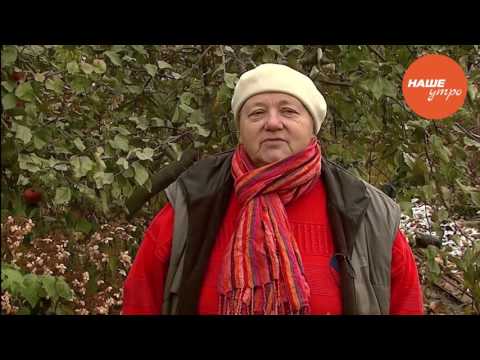

Watch this video on YouTube
Seed reproduction of chokeberry
Take ripe chokeberry berries and rub them through a sieve. The separated seeds must be poured into a container with water to free them from the pulp, which should float. Then they are thoroughly washed and combined with calcined river sand (1: 3), which must be moistened. The container with seeds for 3 months is removed to the refrigerator shelf intended for vegetables, where they will have to undergo stratification. Remember that the sand should be slightly damp at all times. In the event that sprouts appear at the seeds, but they still cannot be planted in open soil, the container with them will need to be moved to a colder place with an air temperature close to 0 degrees. After the time comes for sowing seeds in open ground, grooves are made in it, the depth of which can vary from 6 to 8 centimeters. It is in these grooves that the seeds are sown, after which they are sealed. The surface of the plot with crops must be covered with a layer of mulch (humus or sawdust). After the seedlings have formed 2 true leaf plates, they will need to be thinned, while a distance of 30 mm must be maintained between the plants. After the seedlings begin to form 4 or 5 true leaf plates, it will be necessary to thin them out again, while the distance between the plants is doubled to 60 mm. With the onset of the next spring period, the seedlings are thinned out again, but this time a distance of at least 10 centimeters is kept between them. Seedlings constantly need systematic watering, weeding, loosening of the soil surface. They will also need top dressing, which is done once in spring, and for this they use slurry. With the onset of autumn of the second year, young plants can be planted in a permanent place.
Reproduction of chokeberry by root suckers
Every year, near the black chokeberry, root shoots grow. At the same time, how many such offspring will grow depends on the nutritional value of the soil, the amount of moisture and the variety of the plant itself. After 12 months from the moment the offspring appears, its root system will be fully formed. Using a shovel, cut it off from the parent bush and plant it in a new permanent place. Before transplanting the offspring, its shoot should be cut to 2 or 3 buds.
Reproduction of chokeberry by layering
For propagation of chokeberry, horizontal as well as arcuate layering are used. In springtime, you need to dig up the soil under the plant. Then, to obtain cuttings, developed one-two-year-old shoots are selected, which have powerful growths. Then, under the selected shoot, you need to make a groove in which it is laid. Fix the shoots in this position by pinning them, while their upper part should remain free, and it must be pinched a little. Such layers need good care. They need to ensure timely watering, weeding and loosening of the soil surface, which is done very carefully. Shoots should grow from the buds of this layer.After their height is equal to 10-12 centimeters, they will need to be covered by ½ part with moistened humus or soil. After 15–20 days, the shoots should grow back to the same height, after which they are sprinkled again in the same way as the first time. It will be possible to cut off the layers from the mother plant and plant it in a permanent place in the fall, but it is better to do this with the onset of the next spring period.
How to propagate by dividing a bush
This method of reproduction is recommended only if you transplant chokeberry to a new place. It is necessary to remove the bush from the ground in the spring before sap flow begins. All old branches must be cut off from him, and the root system must also be freed from the soil. Then it is divided into several parts with the help of an ax or pruning shears, while it should be noted that each division should have 2 or 3 powerful, healthy stems and well-developed young roots. Places of cuts on the root system must be sprinkled with crushed charcoal, then the cuttings must be planted in new places.
Reproduction of chokeberry by grafting
For the stock, experts advise preparing a rowan seedling. Remove all dust from the rootstock surface with a damp sponge. Then it is shortened in such a way that a piece of 12 centimeters in length remains. In this segment, you need to make a deep split through the center. The stalk of black chokeberry, which is used as a scion, must be trimmed on both sides so that a wedge is obtained. It should be noted that the resulting wedge must completely fit into the rootstock split. After the scion is inserted into the stock, all sections must be smeared with garden varnish, while the inoculation site must be wrapped with a special ocular film. For the grafting procedure to be successful, it is necessary to create a greenhouse effect, for this a very strong plastic bag is taken, it is put on the seedling and then tied very tightly below the grafting site. After 4 weeks, the package will need to be removed.
It is recommended to plant black chokeberry in the spring before the start of sap flow.
Diseases of chokeberry
Below will be described those diseases that chokeberry suffers most often.
Peripheral wood rot
Peripheral wood rot begins to develop due to mushrooms. To cure the affected bush, it must be sprayed with Bordeaux liquid (1%) or another fungicide. If the plant is very heavily infected, then it will have to be removed from the ground along with all the roots and destroyed.
Moniliosis (fruit rot)
In a plant affected by such a disease, the fruits soften, become pale and mummified. On the surface of the berries, pale brown pads are formed, in which there are spores of the fungus. In the event that the infected fruits are not collected and destroyed, they hang on the branches of the bush until spring, and then because of them young flowers and ovaries will become infected with this disease. Immediately after the detection of the disease, the affected bush will need to be sprayed with a Bordeaux mixture or copper oxychloride.
Septoria spot
In specimens affected by septoria spotting, in the middle of the summer period, pale brown oval specks appear on the surface of the leaf plates, the border of which is of a darker shade. As the disease progresses, the tissue inside the speck dries up, cracks appear on it, and it falls out. As a preventive measure, do not forget to spray the plant with Bordeaux liquid in spring and autumn, and in a timely manner, rake and destroy the fallen leaves. The affected bush, as well as the surface of its near-stem circle, should be sprayed with copper oxychloride or Abiga peak.
Grebenshik
If the defense system of the chokeberry is significantly weakened by root rot, then it can get sick with such a fungal disease as comb.Outwardly, the fungus is leathery thin plates of whitish or grayish-brown color. Disease-infected branches should be cut and destroyed. In spring and autumn, chokeberry is sprayed in order to prevent this disease, for this you can use Abiga-peak, Bordeaux mixture or copper oxychloride.
Less commonly, this plant becomes ill with the following diseases: bark cancer (bacterial necrosis), verticillosis, viral ring spot, brown spot and rust.
Chokeberry pests
Below will be described those pests that settle on the chokeberry most often.
Red apple and brown fruit mite
These small insects harm not only this garden culture, but also plum, apple, pear and cherry trees. When the chokeberry fades, many larvae of this pest appear. They pierce the leaf plates and suck the juice out of them. After 20 days, the larvae become adults, and they again lay the larvae. Several generations of ticks develop during one season. To destroy such pests, it is necessary to spray the affected bush with such agents as colloidal sulfur, Cydial, Karbofos, Tedion, Kleschevit and other preparations of a similar action. In this case, they must be alternated, because the body of such a pest is capable of developing immunity to these drugs.
Green apple aphid
These small insects often settle on young seedlings. This pest sucks the plant sap from the chokeberry, which makes it weak. It should also be remembered that aphids and ticks are considered the main carriers of viral diseases that are incurable. As a preventive measure, before the buds open, the plant should be sprayed with Nitrafen, Bordeaux liquid or Karbofos. The affected bush must be treated with Metaphos, Ambush, Decis, Biotlin, Cyanox or other means of similar action.
Hawthorn
The caterpillars of the hawthorn butterfly gnaw out the buds during their opening, and then destroy the flowers and leaf plates of the plant, of which only veins remain. It should be remembered that one butterfly can lay about 500 eggs at a time, so it is so important to take care of protecting the chokeberry from such a pest. To do this, at the beginning of the spring, before the buds open, the bushes must be sprayed with Oleocubrite, Bordeaux mixture or Nitrafen. Before the chokeberry blooms, it should be treated with Karbofos, Zolon or Chlorophos.
Rowan moth
The caterpillars of the mountain ash moth gnaw holes in the berries of the chokeberry. As a result, dark spots form on their surface, and the fruits themselves become bitter. This pest is also able to settle on the mountain ash, and sometimes it can also be found on the apple tree. To get rid of the pest, you should resort to the same methods of struggle as during the destruction of the hawthorn.
Cherry slimy sawfly
The cherry slimy sawfly is a black insect with transparent wings and a shiny belly. It settles on the bush from the first days of July, and until the first autumn weeks, it manages to cause significant damage to the leaf plates of the plant. The life span of a female of such a pest is slightly more than a week, but during this time one individual manages to lay about 75 eggs under the lower skin of the leaf plates. The larvae devour the foliage of the plant, while only veins remain of it. The affected bush must be sprayed with a solution of Chlorophos (for 10 liters of water from 20 to 30 grams). You can also use a solution of lime or soda ash for processing.
Types and varieties of chokeberry with photos and names
There is a fairly large number of varieties of chokeberry, both domestic and foreign selection.Most of these varieties are distinguished not only by their high yield, but also by their decorative effect. The following varieties have proven themselves best:
- Nero... This variety was born thanks to German breeders. It is resistant to frost and shade-loving. Glossy leaf plates of a dark green color change to reddish yellow in autumn. The fruits are collected in bunches, they are very large. In some cases, their size is 2 times larger than the size of other varieties. They are high in minerals, vitamins and antioxidants.
- Viking... Finnish variety. It is distinguished by its high yield and frost resistance. Their glossy leaf plates are green in color. Glossy berries are slightly larger than black currant fruits.
- Black eyed... This variety stands out for its unpretentiousness and resistance to frost, pests and diseases. It is also considered an excellent honey plant. The diameter of the fruits is about 10 mm, their taste is less astringent compared to other varieties.
- Hugin... A variety of Swedish selection. Differs in high decorativeness and frost resistance. Pruning such a plant must be extremely careful. Plant height is about 200 centimeters. The color of glossy leaf plates in summer and spring is dark green, in autumn it changes to deep red. Large glossy fruits are colored black.
Also quite popular among gardeners:
- Polish varieties - Egerta, Dabrowice, Galitsianka, Kutno, Nova weight;
- Russian varieties - Sibirskaya and Michurina;
- Finnish varieties - Hakkia, Belder and Karkhumyaki;
- Belarusian varieties - Nadzeya and Venisa;
- Danish variety - Aron.
Properties of chokeberry: benefits and harms
The medicinal properties of chokeberry
Chokeberry is rightfully considered a treasure of useful substances. It includes beta-carotene, vitamins P, K, C, E, B1, B2, B6, macro- and microelements manganese, boron, fluorine, iron, iodine, molybdenum and copper, sugars, pectins and tannins. The content of vitamin P in its berries is 20 times higher than in oranges, and 2 times higher than in black currant. The fruits of such a plant have powerful medicinal properties due to the fact that they balance the combination of biological substances.
Fresh fruits and juice squeezed out of them has an antispasmodic, hematopoietic, vasodilator, hemostatic and capillary-strengthening effect. Therefore, they are used for the treatment of hypertension and atherosclerosis, as well as for the prevention of these diseases. The healing properties of this plant help to strengthen the walls of blood vessels and make them more elastic. In this regard, the use of chokeberry is recommended for people suffering from certain vascular diseases, which are accompanied by fragility of tissues, for example: capillarotoxicosis, scarlet fever, measles, eczema, allergic vasculitis.
These fruits strengthen the immune system, lower blood cholesterol levels, have a positive effect on the endocrine system and normalize blood pressure.
There is a black chokeberry berry, experts advise, with diseases of the thyroid gland and diabetes. They are also prescribed as a diuretic for kidney disease, allergies and typhus. Chokeberry fruits have a positive effect on digestion and liver function, increase the acidity of gastric juice, improve appetite, promote the formation and outflow of bile.
The fruits contain pectins, which cleanse the body of radioactive substances, pathogens and heavy metals, eliminate spasms, and normalize the intestines.
If there are such fruits, then a decrease in emotional imbalance will be observed, since the regulation of the processes of inhibition and arousal will occur.
Freshly squeezed juice is used to treat burns.
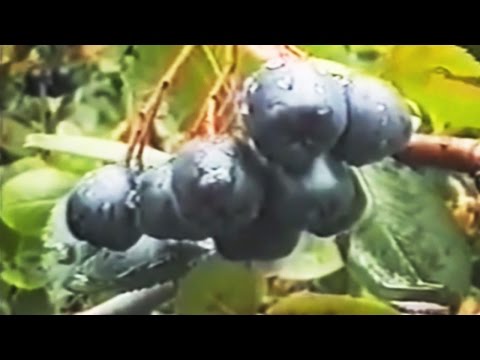

Watch this video on YouTube
Popular chokeberry recipes
- Chokeberry tincture with cloves... Pour 1 kilogram of chokeberry fruit into the jar and gently mash them with a pestle. Pour in 500 grams of granulated sugar, 3 clove buds and mix everything well. Cover the jar with gauze. She will have to stand for two days at room temperature. Then add 1 liter of vodka to the container. The jar is tightly closed with a nylon lid and removed to a dark place for 8 weeks. The finished tincture is filtered and poured into bottles, which are placed in a cool place for storage.
- A drink with a tonic effect... 1 tbsp. freshly boiled water must be combined with 20 grams of dried chokeberry fruits. The mixture is kept in a water bath for 5 to 10 minutes. The cooled broth is filtered, while squeezing the fruits well. Drink a drink 3 or 4 times a day for half a glass.
- Vitamin tea... 2 tbsp. freshly boiled water must be combined with two large tablespoons of dried chokeberry fruit. The mixture should be kept on low heat for 10 minutes, while it should boil slightly. The broth should be infused for several hours. They drink a similar drink 3 times per knock, if desired, you can add granulated sugar or honey to it for taste.


Watch this video on YouTube
Contraindications
Chokeberry has a high content of vitamin C. Therefore, it cannot be consumed in large quantities by people suffering from angina pectoris and hypertension. The fact is that this can cause an increase in blood clotting and the appearance of blood clots. In this regard, chokeberry should not be used for thrombophlebitis.
Chokeberry fruits and juice should not be used for diseases such as: gastric ulcer or duodenal ulcer and gastritis with high acidity (hyperacid gastritis).
This product cannot be consumed in unlimited quantities, even by a relatively healthy person. If you have any doubts about eating such fruits, then consult with a specialist.

